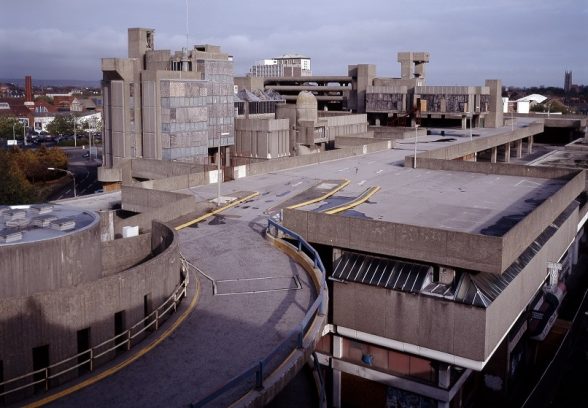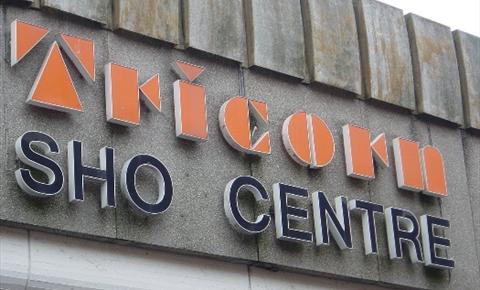This website uses cookies
This website uses cookies to enable it to function properly and to analyse how the website is used. Please click 'Close' to accept and continue using the website.




Tricorn Centre, Portsmouth
Type: Commercial/offices
Architect: Owen Luder Partnership
Location: Portsmouth
The Tricorn Centre in Portsmouth was perhaps the most flamboyant of British brutalist buildings. Its tough, macho quality, with its profiled and sculpted concrete forms constantly transforming in response to the surrounding urban topography, had a poignant relevance to the 60s and the naval city of Portsmouth in particular.
It comprised shops, supermarket, rooftop and multi-storey car-parking, flats, two pubs and a wholesale market. Not one elevation looked the same, though each end was capped with a circular car ramp, and, at the east end, the famous car park trays and Corbusian stair towers rose. It was a true landmark building.
Designed by the Owen Luder Partnership (Luder was twice RIBA President), under the direction of architect Rodney Gordon, it received wide acclaim at the time of its opening in 1966 – it was a key building included in Reyner Banham’s influential Megastructures; Ian Nairn wrote in the Observer: ‘At last there is something to shout about in Portsmouth’ claiming that nothing really grand has been built there since 1890, when the city hall was built.
But the Tricorn had a dogged history. The location was far from ideal,, something recognised by Gordon but over which he had no control. The shopping centre was never connected to the main shopping street, meaning that the big chain stores chose not to move in.
The building was never finished – it was never detailed and the proposed landscaping did not happen. Retailers added their own uncoordinated shop fronts in an ad hoc way There was never a proper level of investment and the building fell into disrepair.
The C20 Society had fought and failed to get listing and eventually the Tricorn Centre was demolished in 2004. But its influence lives on, surely providing the inspiration for buildings such as the Pompidou and Lloyds, work that people from the Luder practice (Laurie Abbott) went on to do later, using the same idea of expressing the building’s structure and services, and leading onto the whole High-Tech movement.
This text needs adding

Become a C20 member today and help save our modern design heritage.